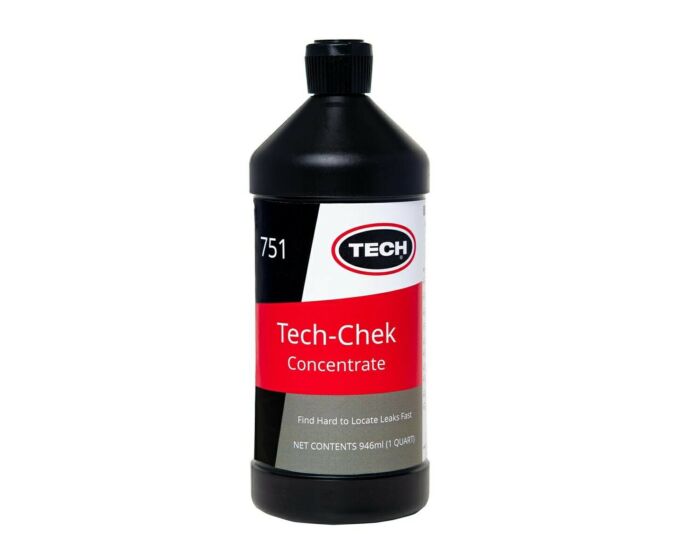We use cookies to make your experience better. To comply with the new e-Privacy directive, we need to ask for your consent to set the cookies. Learn more.
751 TECH Chek Leak Detector Concentrate
Product category: Workshop chemistry
Price for: 1 PC.
High-foaming preparation intended for detecting leakiness in tires 751 TECH. Capacity 945 ml.
- Details
-
High-foaming preparation intended for detecting leakiness in tires. The product reacts with leaking air. As a result, we can detect leaks very fast and effectively.
Big savings
The liquid is in the form of a concentrate, that is why instruction for use recommends applying it with with water. Preparation is necessary at every tire change and repair point.
Tire damage
A loss of the tire seal does not necessarily mean a large hole in the tire. It may be invisible to the eye, with minor damage to the tire. In such situations, the TECH T-751 leak test liquid will be useful for the quick detecting of the leakiness.
Damaged or incorrectly installed valve
The reason of slow pressure drop may be a leaking valve or inaccurate adhesion of the valve to the rim. In this situation, we can also verify it using the TECH preparation.
- Technical data
-
- Capacity: 945 ml
- Type: concentrate
- Brand: TECH
- SKU: 751
- Category: Chemicals
- Warranty
-
Warranty: 12 months
- Safety
-
- Responsible Producer:
-
TECH EUROPE BVBA
Koeybleuken 16
2300 Turnhout
Belgium
techeurope@trc4r.com
+3214423103
Chemical risks
When using chemical products, a variety of chemical hazards can occur, which can lead to serious consequences.
Chemical spills: These can occur due to packaging damage, misstorage, or misuse. Spills lead to environmental contamination, property damage and exposure of human health to toxic substances.
Chemical reactions: Uncontrolled chemical reactions can occur when different chemicals interact. This can lead to explosions, fires or the release of harmful gases that can be dangerous to health and life.
Corrosion and degradation of materials: Certain chemicals can cause corrosion and degradation of materials they come into contact with. This can lead to a weakening of the structure of materials, which in turn can cause equipment and structures to fail.
Poisoning: Improper use of chemical products can lead to inhalation, ingestion, or absorption through the skin. This can lead to poisoning, which can have serious health effects and even be life-threatening.
To minimize these risks, it is recommended to read the information on the packaging and in the safety data sheets, use appropriate personal protective equipment, follow safety procedures, regularly inspect equipment in which chemicals are used to check for tightness and correct closure of packaging, and appropriate storage and use of chemicals.
Environmental risks
A variety of environmental hazards can occur during the use and disposal of products, which can lead to serious consequences.
Environmental pollution: Products, especially those containing chemicals or plastic, can contribute to soil, water, and air pollution. This can lead to the degradation of ecosystems, groundwater and surface water pollution, and negative impacts on human and animal health.
Improper disposal of products: Improper waste management can lead to the uncontrolled spread of toxins and contaminants. This can result in severe environmental pollution, risks to public health, and the loss of valuable natural resources through a lack of recycling.
Electronic waste (e-waste): Electronic products, when not properly disposed of, can become a source of e-waste containing harmful chemicals and heavy metals. This can lead to soil and water contamination, as well as pose a risk to human and animal health.
To minimise environmental risks, it is recommended to manage waste appropriately, including segregation and compliance with environmental regulations.


